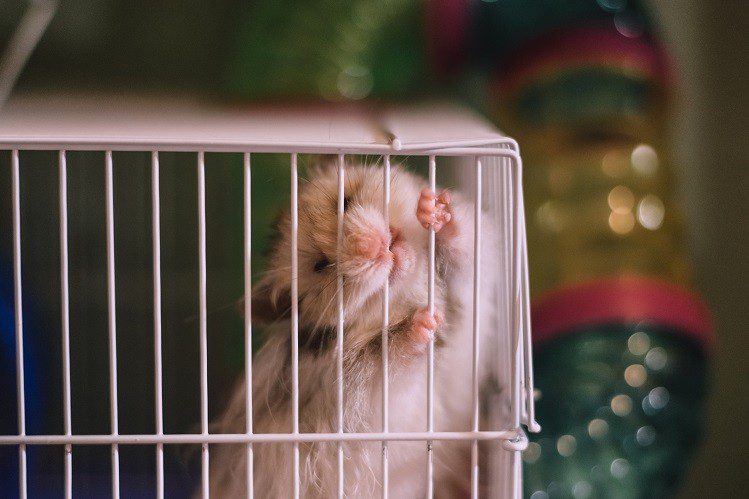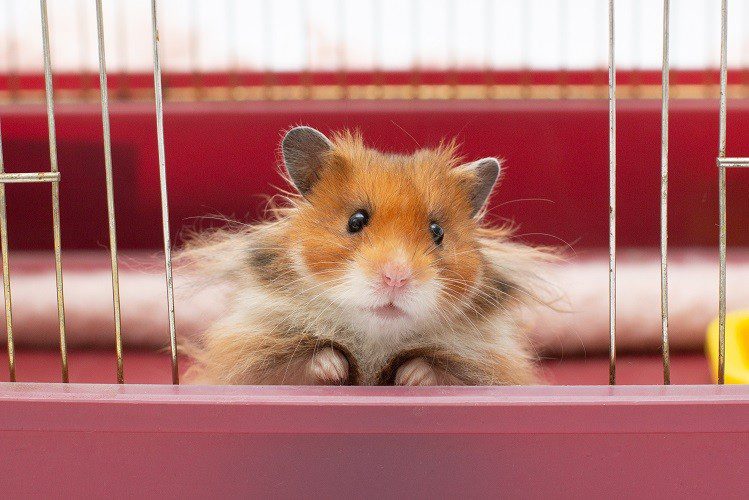
Why does a hamster gnaw on a cage and how to wean it from it?
The hamster is an incredibly cute animal. True, when he again gnaws the cage at 3 am and disturbs everyone’s sleep, it may not seem so!
Why a hamster gnaws a cage and how to wean it, read our article.
Hamsters are rodents. Nature itself has laid in them the desire to gnaw everything, the more – the better.
In the wild, hamsters use their teeth all the time: they eat grains, grind incisors on trees, and build cozy homes for themselves. At home, the hamster may lack this. To occupy himself and use his natural potential, he is forced to gnaw at the cage.
In addition to the natural need to gnaw, the reasons for this behavior may be:
hunger;
the need to grind teeth;
sleep problems, violation of the regime;
bad state of health;
boredom;
stress;
too tight cage.

You may have heard that only Syrian and Djungarian hamsters gnaw at cages. But in fact, everything is individual. Behavior depends not so much on the variety, but on the individual characteristics of the animal and the conditions in which it lives.
It is not the type of pet that is important, but the arrangement of its cage.
Do not be surprised if during the day the hamster behaves quietly, and at night it begins to literally besiege its home. The fact is that these rodents are nocturnal animals, and the peak of their activity just falls at night. So chewing on the cage at night is much more pleasant for them.
The desire to gnaw is normal for a hamster. But still, it is better that this desire does not extend to the cell.
Firstly, one day the hamster will still be able to gnaw through it. Then he will escape from his hiding place and will be exposed to a huge number of dangers. Secondly, it can injure the teeth and oral cavity. Thirdly, chewing on a cage is simply harmful. There may be paint or other harmful substances on the bars that can lead to poisoning.

- The most important thing is to review the conditions of the hamster and its nutrition. Is the cage big enough? What if the animal is cramped in it? For dwarf species (for example, Djungarian hamsters), the ideal size is 50 × 30 cm. Syrian hamsters will need a cage of at least 60 × 40. The number of floors can be any, but 2-3 floors are always better than one.
Does the diet meet the needs of the rodent? Are you following the diet? Hamsters like to eat little and often, so there should always be suitable food in his feeder. This is the foundation of the foundations.
Place a mineral stone in the cage so that the hamster can grind its incisors on it instead of on the bars of the cage.
Buy toys for Khoma so that he knows what to do with himself at his leisure. It can be various tunnels, ladders, houses, shelves and, of course, a running wheel. The main thing is to choose everything in size and from safe materials.
Avoid stressors. The cage should be installed in a quiet and peaceful place. A hamster in a cage must have a shelter house where no one will disturb him. Loud noises, too bright lights, or constant attention from children or other pets are all stressful things for a hamster that negatively impact behavior. By the way, hamsters are not the most sociable pets. They are more comfortable alone than in the company of relatives.
Keep an eye on your hamster. The hamster may chew on the cage in an attempt to cope with the discomfort. He may be nervous and not feeling well. Usually, if the matter is in the disease, then in addition to the behavior, there are other symptoms. But still, it is never superfluous to consult with a veterinarian.
And finally: carefully tame the hamster and do not demand too much attention from him. It is better to watch hamsters from the outside, without imposing your society on them. If the animal is often taken out of the cage, it can experience severe stress – and because of this, it makes a lot of noise both day and night.
Good dreams and whole cells to you!





